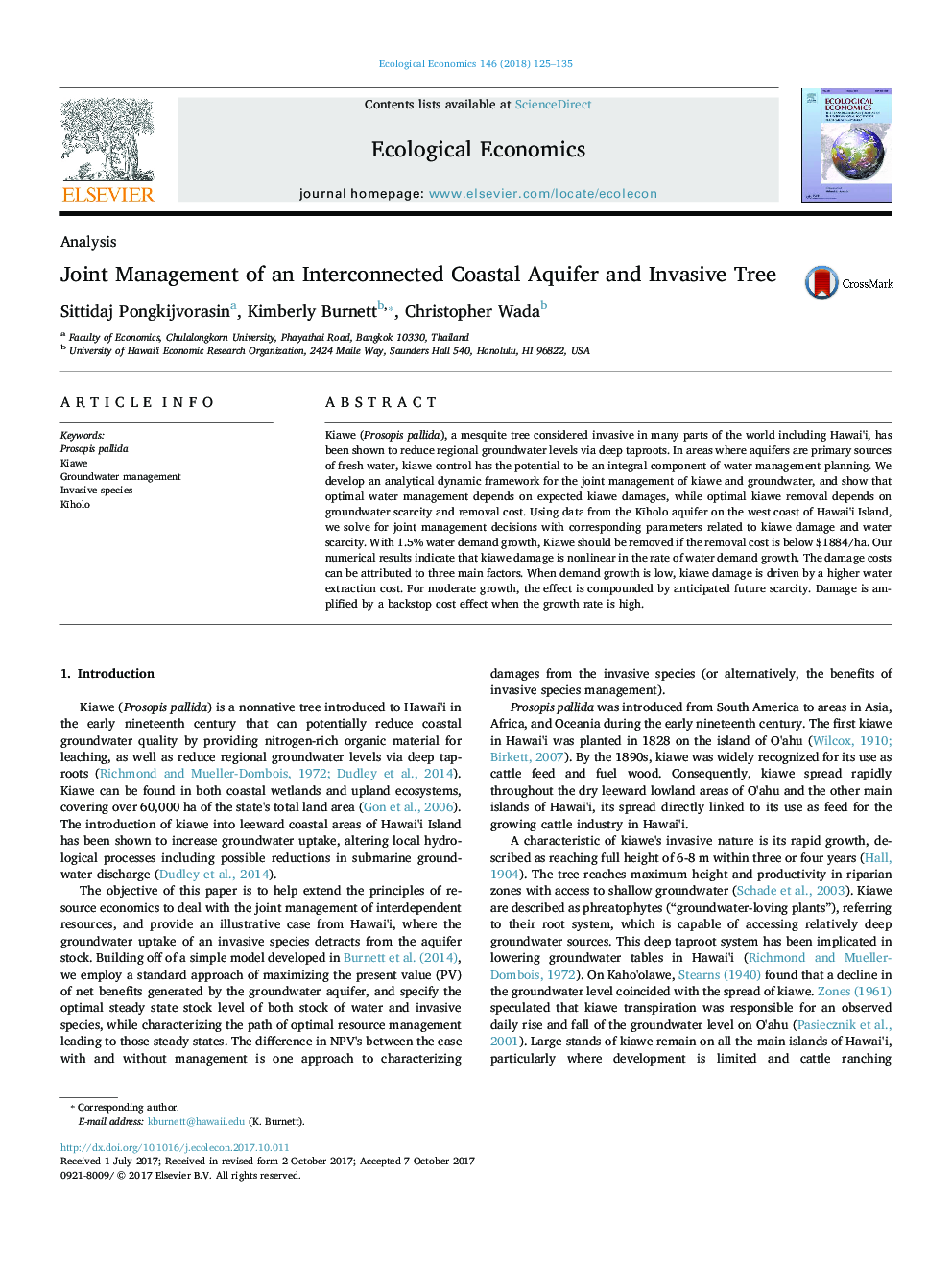| Article ID | Journal | Published Year | Pages | File Type |
|---|---|---|---|---|
| 5048496 | Ecological Economics | 2018 | 11 Pages |
â¢Optimal groundwater management depends on expected P. pallida (kiawe) damages.â¢Optimal kiawe management depends on scarcity value of groundwater and removal cost.â¢Kiawe damage costs are nonlinear in the rate of water demand growth.â¢For 1.5% water demand growth, remove kiawe if the cost is below $1884/ha.â¢Optimal kiawe removal is insensitive to rates of intrinsic growth and uptake.
Kiawe (Prosopis pallida), a mesquite tree considered invasive in many parts of the world including Hawai'i, has been shown to reduce regional groundwater levels via deep taproots. In areas where aquifers are primary sources of fresh water, kiawe control has the potential to be an integral component of water management planning. We develop an analytical dynamic framework for the joint management of kiawe and groundwater, and show that optimal water management depends on expected kiawe damages, while optimal kiawe removal depends on groundwater scarcity and removal cost. Using data from the KÄ«holo aquifer on the west coast of Hawai'i Island, we solve for joint management decisions with corresponding parameters related to kiawe damage and water scarcity. With 1.5% water demand growth, Kiawe should be removed if the removal cost is below $1884/ha. Our numerical results indicate that kiawe damage is nonlinear in the rate of water demand growth. The damage costs can be attributed to three main factors. When demand growth is low, kiawe damage is driven by a higher water extraction cost. For moderate growth, the effect is compounded by anticipated future scarcity. Damage is amplified by a backstop cost effect when the growth rate is high.
